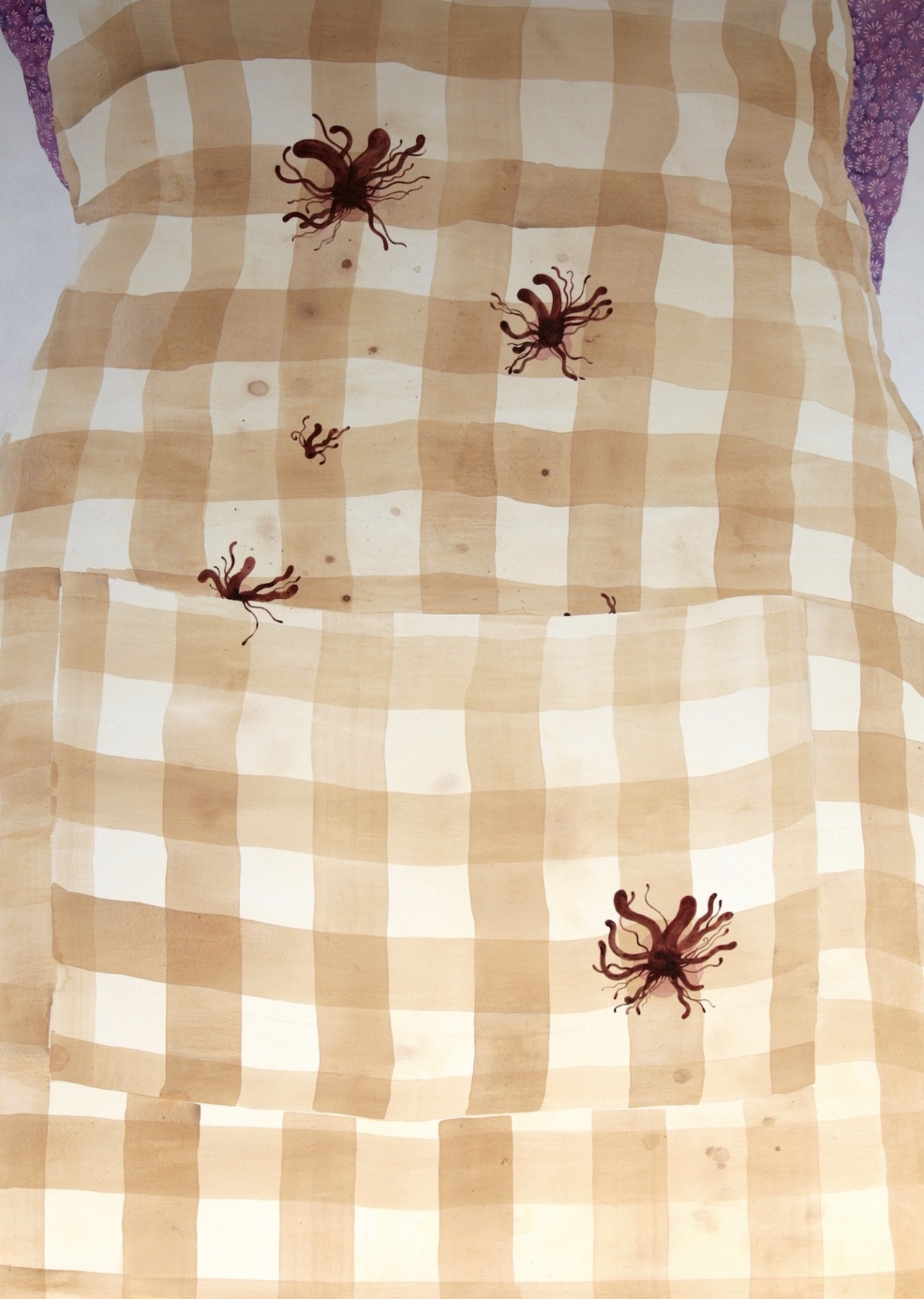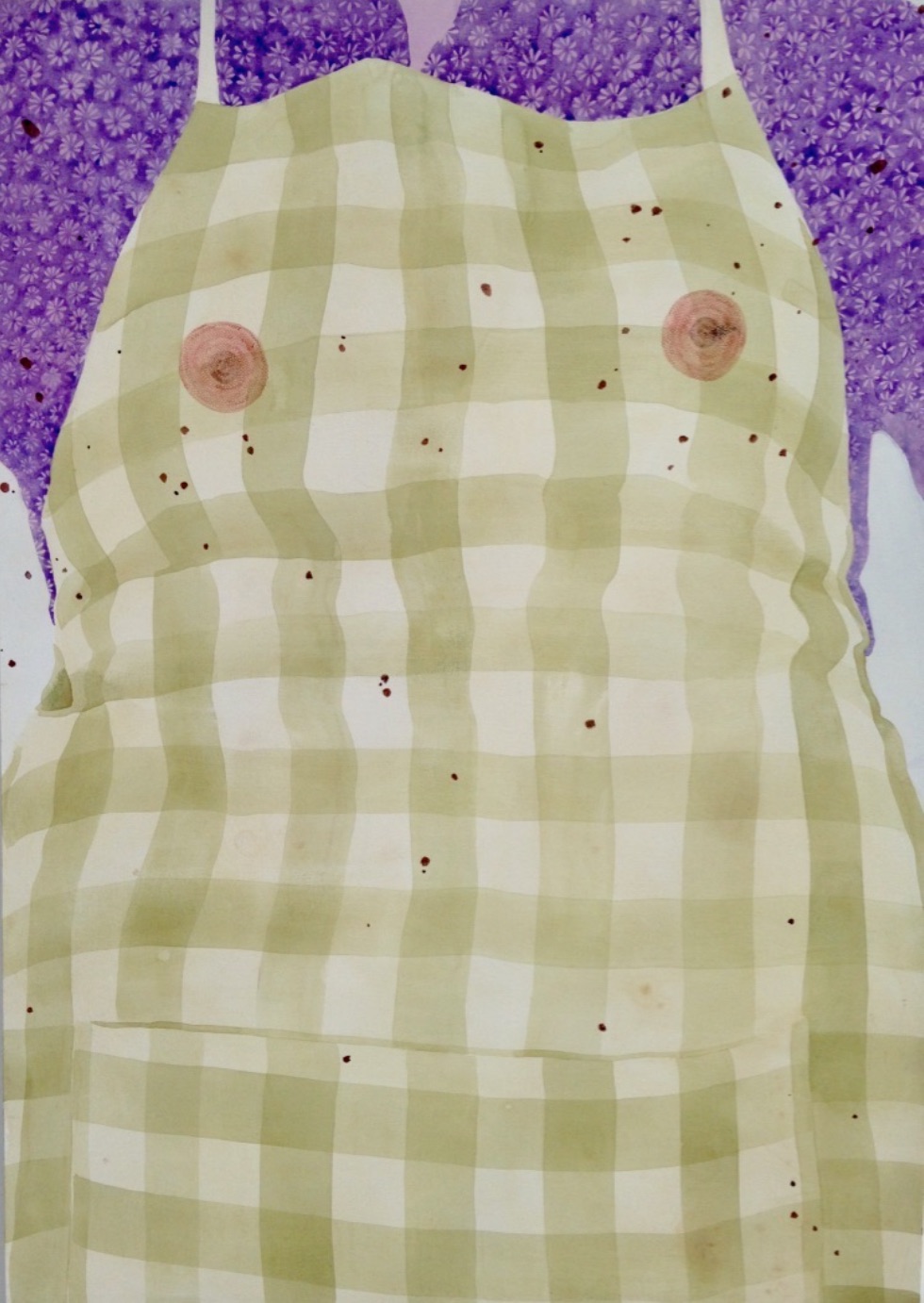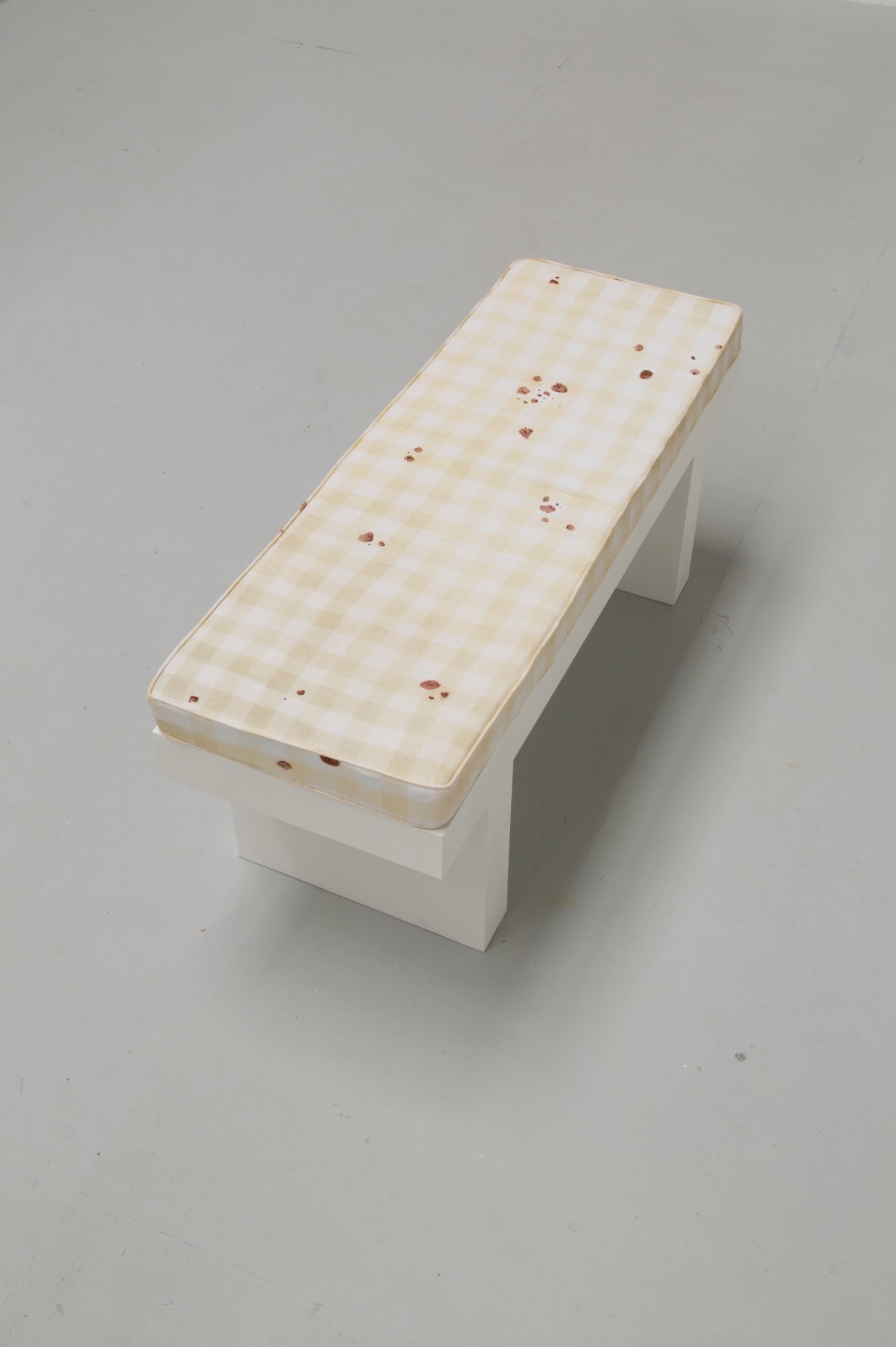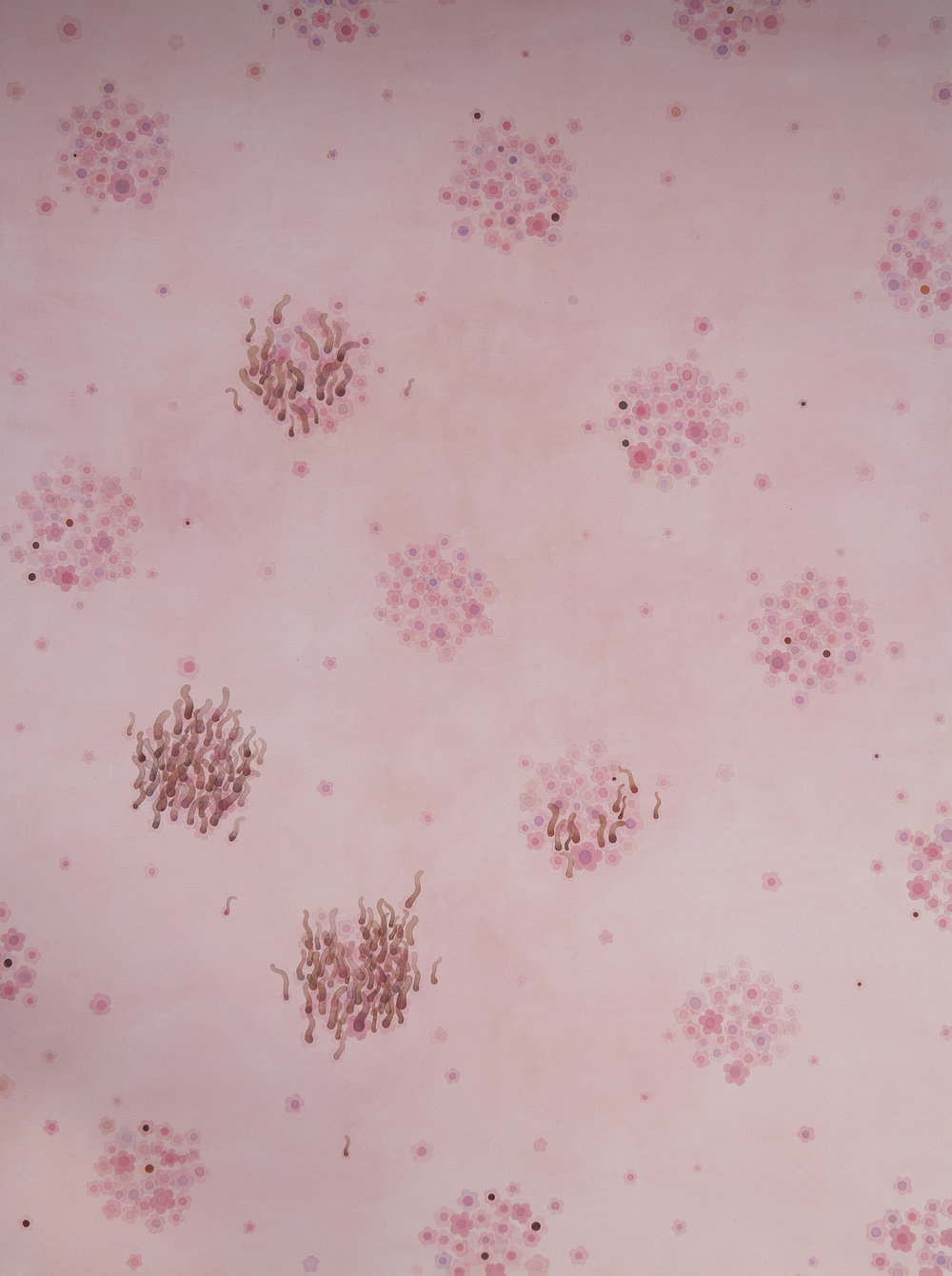
You had a really standout body of work for your final show at Goldsmiths. Can you tell me a bit about this series of paintings and how you came to that point?
Thanks so much Emily. The work really evolved from a longstanding interest in domestic pattern and the way in which materials that we know intimately hold so much memory, history and emotion. In the first instance, I was really interested in how I could use pattern to explore the experience of being a parent. So at one level, these are works about the mess, anxiety and ambivalence of being a mother. They are about domestic failure and the desire to stay in control in the face of what feels like ever impending disaster. At the same time I was interested in using forms that might traditionally be seen as feminine and attempting to bring them into painting in a critical way and in a way that might honour women’s labour. I was thinking about the comparison between the work of caring for others and the labour involved in producing commodities like china or textiles. Both are repetitive and monotonous but also incredibly skillful. There was something very important for me about lovingly handcrafting a facsimile of a cheap mass-produced pattern on canvas. At another level these works are also picking away at the line between abstraction and representation and are part of a continuing exploration of the narrative potential of abstract painting.

The combination of pattern and organic form is intriguing in your work. How do pull these two elements together? Are you quite instinctive as you paint or is everything very planned beforehand?
A key thing for me in these works has been trying to create a feeling of dissonance between the different layers and motifs so that a kind of critical space can open up. I like the idea that the work looks quite sweet at first but on closer inspection something darker and more repulsive surfaces. Humour is also a really important part of the mix. For me, making work really is a mixture of instinct and practicing. Ideas can pop up when I am running or doing something mundane, but the process of integrating them into a piece of work can take much longer. I am a great believer in allowing for less conscious processes where things have time to ferment and fester away in the background. Having said that, I do a lot of drawing and rehearsing on paper and in smaller works before I commit to the larger canvases. The materiality of these paintings means that there is no going back. In a way, the final painting often feels like a performance and for me a kind of anxiety about getting the painting right has been an important part of the content of these pieces.

Do you feel your interest in motherhood is hugely informed by personal experience?
Yes! Motherhood has been a really important experience for me and I think that these works, and in fact most of my paintings, have started from my personal experience and moved outward from there. That these paintings chart a particular event, however, is not the most important thing to me. It’s much more important the work can open up a conversation with the viewer and that they can recognize something of their own experience in the work. I think a lot about the titles because I think they can be a really helpful way of moving the meaning of the work out beyond the specificity of my experience into a shared concern.

We’re very excited to begin working with you on the Elephant residency. Do you have an idea in mind already of the kind of direction you’ll be taking?
I do have some work that I decided to park while I made the work that went into my degree show that I wanted to return to. It is work that is more speculative and more to do with the process of making rather than work that has an obvious narrative. It feels is a bit like knitting or sewing, more to do with repetition, pattern, routine and structure. It’s also more about the materiality of paint and the process of responding to the materials.

You’ll be working very closely with the materials lab that resides above Griffin Gallery, with lots of the materials and products that are in development. What are you most excited to learn or experiment with on that side of things?
I am really excited (and also a bit scared) about the idea of working bigger and also about letting the materials lead me more. I’m looking forward to trying out new materials and also looking forward to learning from the experts in the lab at Colart. It’s so exciting to be in an environment where people are obsessed with paint and also so keen to encourage me to take risks and see what happens. It’s brilliant to be getting back to making again and to have a focus to move my work forward.





